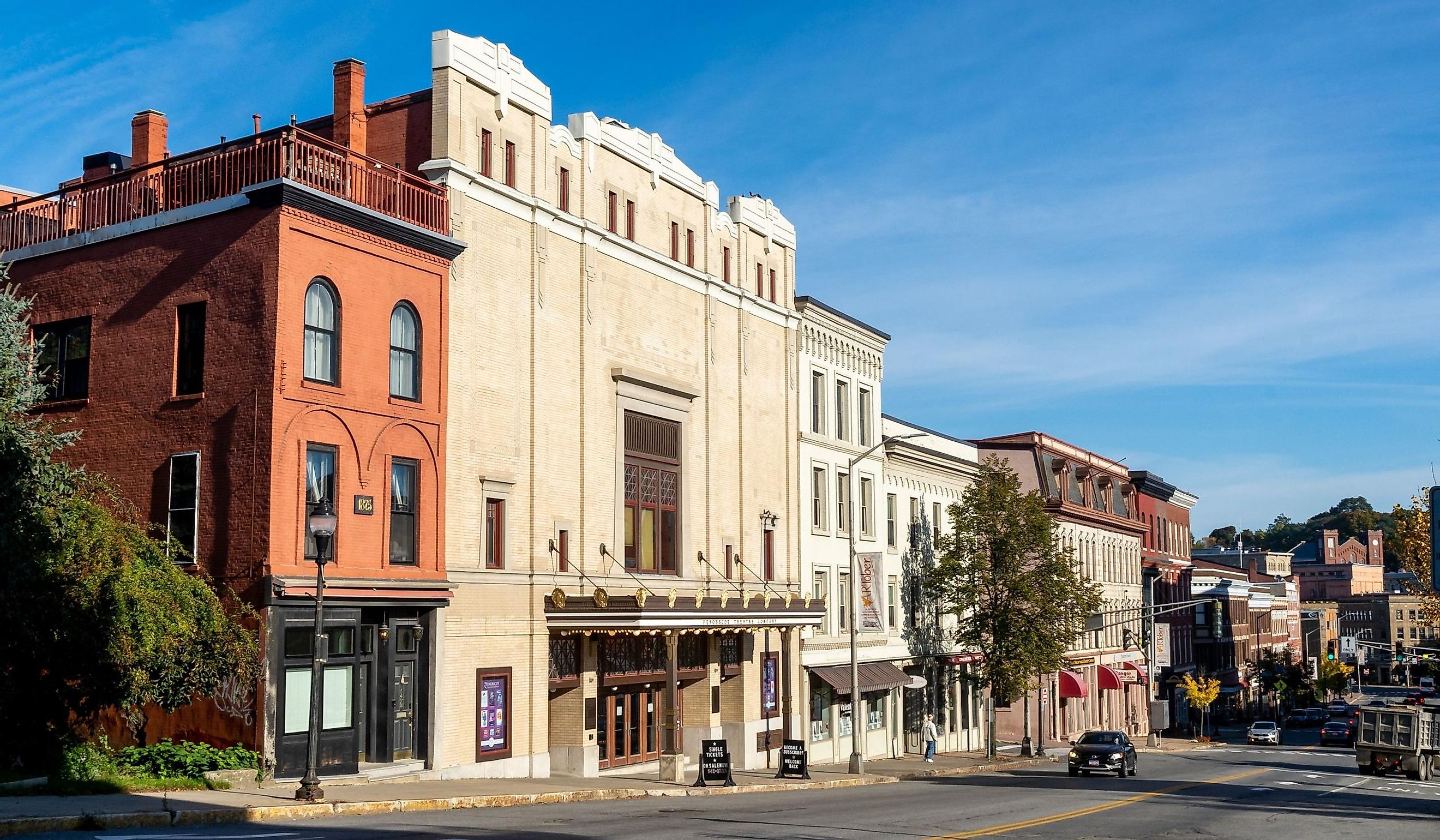
These 9 Towns in New England Have Beautiful Architecture
New England’s architecture is often inspired by styles from other parts of the world, but each style is made uniquely its own as it has been translated to accommodate the needs of the people of this northeastern region of the United States. Featuring a variety of architectural designs, including Italianate, Gothic, and Renaissance, to name a few, the region enjoys a variety of historically significant homes and buildings that date as far back as the early 1700s. Colonial-style architecture represents some of the earliest examples of New Englander’s perseverance and practicality, but there are also a variety of examples of ornate designs that highlight elegance and European-inspired timelessness. The following is a list of 9 towns in New England that have beautiful architecture.
Salem, Massachusetts
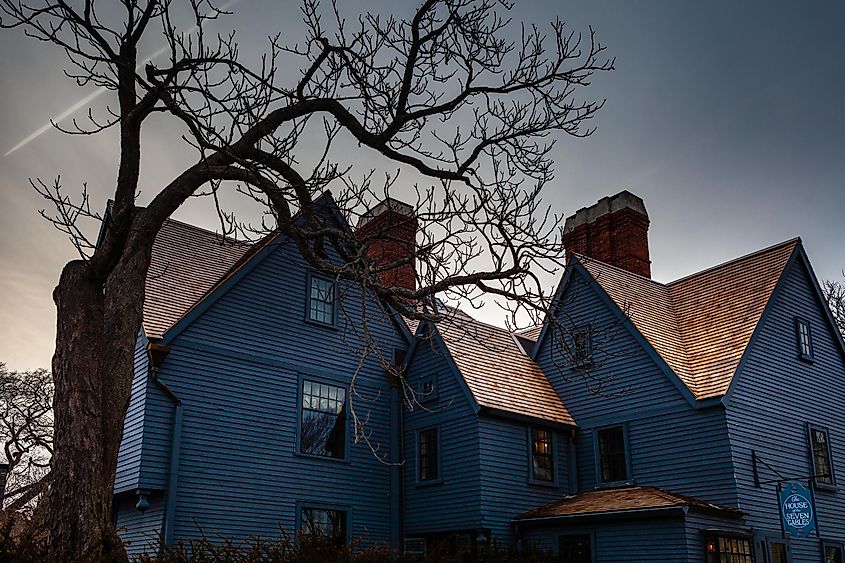
Architecture in Salem, Massachusetts, reflects its Puritan heritage, being one of the primary ports on the Atlantic Ocean. Homes built in these early years were built with functionality in mind, featuring a main room with a central chimney. One of the best examples of Puritan-era architecture is the well-known House of the Seven Gables, which was made famous by Nathaniel Hawthorne in his novel. Construction on this home began as far back as 1668, and it has been fully restored, being one of the finest examples of colonial architecture in the region. Narbonne House, built in 1675, is an example of Craftsman style architecture, representing a prime example of the type of home of the average family in that era, featuring single rooms on the first and second floors as well as a root cellar in the basement and an attic. Hawthorne Hotel, built in 1924-25, is one of Salem’s first hotels, built by the folks living in Salem to accommodate visitors and guests. It is one of the largest colonial-style buildings in Salem, with 93 rooms and many arched windows.
Lewiston, Maine
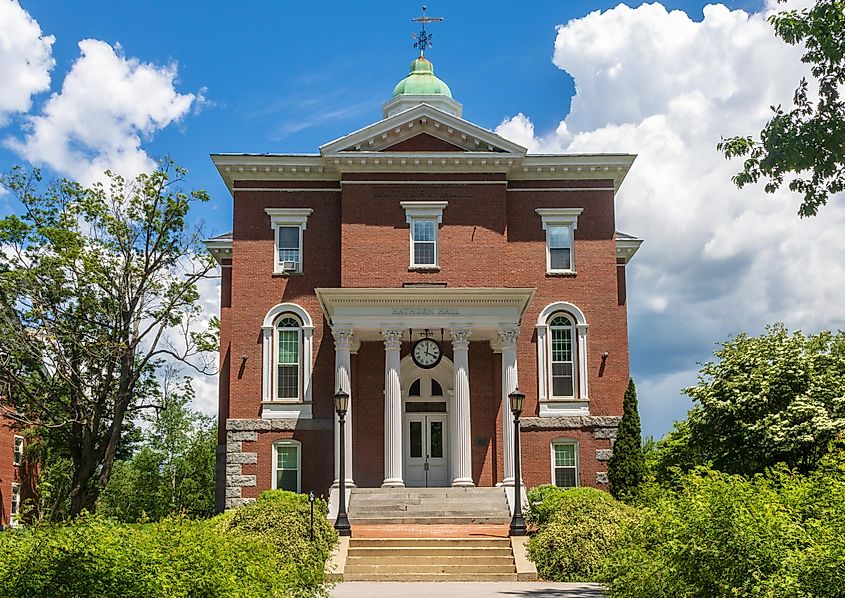
Lewiston, Maine, employed 8 functioning cotton mills in its heyday, which featured sprawling, multi-storied brick structures with numerous waterwheels and spindles. In contemporary times, these places are often converted into spaces for housing and commerce. The Bates Mill in Lewiston is a prime example of this sort of renewal. It features straight roof lines, square and octagonal towers, and ornamented trim. It now accommodates housing and office space for over 2,000 people. St. Joseph’s Church is the oldest Catholic church in Lewiston, representing Irish Catholic influences in a German Revival architectural style, featuring religious artwork in the German-Romantic style, stained glass windows imported from Munich, and a brick and granite exterior. Lewiston’s Peter and Paul church was constructed in 1938 and features a central rose window and two main spires that rise high within the skyline. Built-in the Gothic style, this structure stands as a testament to the French-Canadian’s dedication to their faith and reflects a similarity to cathedrals in Europe.
Coventry, Rhode Island
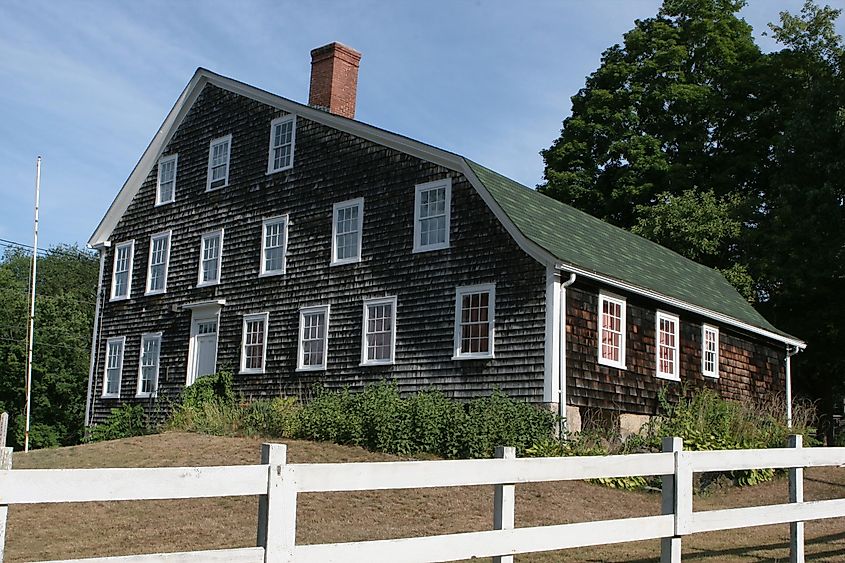
The first stop to make while in Coventry, Rhode Island, is the Paine House Museum, constructed in 1691 as a family home and Inn. It was passed down to numerous owners before it became a museum, which is now open to the public. Its rooms are decorated to reflect the home’s colonial style and heritage. The Nathanael Greene Homestead represents one of Coventry’s best-preserved 18th-century buildings, and it sits on 13 acres of meadows and woodlands. Restored to its original splendor, the Homestead also features a caretaker’s cottage. For a more industrialized example of the architecture on Coventry, The Harris Mill site consists of luxury apartments in a redeveloped structure that was once centered on the cotton industry. It was first built in 1851 and stayed in production until 1954, with a general store, cotton mill, and mill works on site. This multistoried complex features a granite exterior, brick chimneys, and numerous windows of various sizes. It now consists of 156 apartments.
Johnston, Rhode Island

The Clemence Irons House is the oldest house in all of Johnston, Rhode Island. It represents a fine example of 20th-century restoration and has been lovingly brought back to life, though its original construction was completed in 1691. Over time, thirteen rooms comprised this home, which was built in the stone-ender style. For an example of Johnston’s modern architecture, Johnston’s Citizens Bank Corporate Campus offers sprawling buildings on a 123-acre property. It is finished with cladding, concrete, and glass. Designed to be reminiscent of barns of old, weathered shingles cover the roof, and was built with environmental sustainability in mind. The Daniel Angell House is a much older structure, dating back to 1725 and consists of a large chimney and seven bay windows, constructed of wood but remarkably preserved and represents an important example of Rhode Island architecture.
Wellesley, Massachusetts
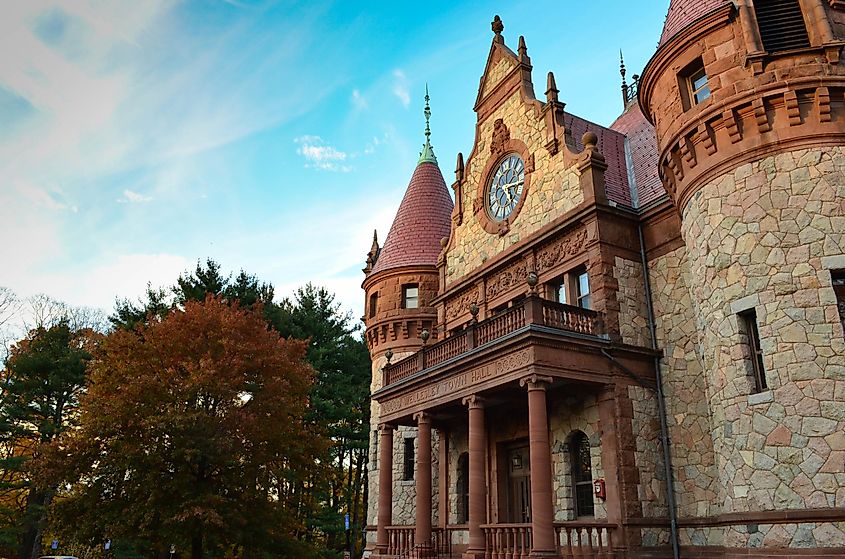
The crown jewel of architecture in Wellesley, Massachusetts, is 525 Washington Street, the location of Wellesley’s Town Hall. This building towers high up to the sky and is the focal point of the community, almost bursting with architectural details and charm. Comprised of brownstones that trim the pink granite exterior, the building’s design is inspired by the French Chateau, which is complete with steep gables and towers. The original construction date began in 1881, and an addition was completed in 1883. The nearby Intermediate Building was once a high school (from 1895 to 1907); it has been repurposed as a senior’s complex, featuring multiple levels, a brick exterior, and a striking black roof. The Wellesley Village Church features a brick exterior and a Georgian Revival architectural style, with a cemetery containing graves that date back to the 1770s. This structure was razed to the ground by fire in 1916 but came back bigger and better and is now a thriving church and an important component of the community of Wellesley.
New London, Connecticut

New London, Connecticut, is a place where some of the loveliest cottage-style homes can be found in New England. They are finished in architectural styles reminiscent of fairy-tale-like abodes such as the Walter Garde Summer Cottage. Built in 1910, this home’s unique features include shingles on the upper half of the exterior. Cottage gardens and stone fencing greet visitors on the way to the entrance of the home. The Governor Waller Castle is also imbued with fairy tale charm and is reputed to have been built in 1905 or earlier. It is constructed almost entirely of stone with arched windows that afford stunning views. Another architectural gem found in New London is the Lighthouse Inn, built in the early 1900s. Originally a private home, this stunning colonial revival mansion was eventually converted into an inn, enjoying six acres of surrounding wildflower meadows while a tavern and full-service bar are located inside. The Lighthouse Inn is a landmark destination in the region.
Lexington, Massachusetts

The General Samuel Chandler house is one of many examples of European-inspired architecture in Lexington, Massachusetts. Built in the Italianate villa style, this house features a three-story tower and arched windows. It is designed with a rustic aesthetic in mind. The oldest extant schoolhouse in town is the Hancock School. It features classrooms that face the south side of the building, while the entrance is located on the north side. It represents the first architect-designed school in Lexington, constructed of red brick, a chateaux-style roof, and decorative brick trim. Finally, Buckman Tavern is a 1700s-era construction, originally functioning as a place for travelers to stay and locals to gather. These days, it is a museum with a gallery in the upstairs section of the house. It wears its history right on its sleeve, with a musket ball’s hole still visible in the door. This colonial-style building consists of 3 stories and a gabled roof with rich, cozy wooden interiors.
Bangor, Maine
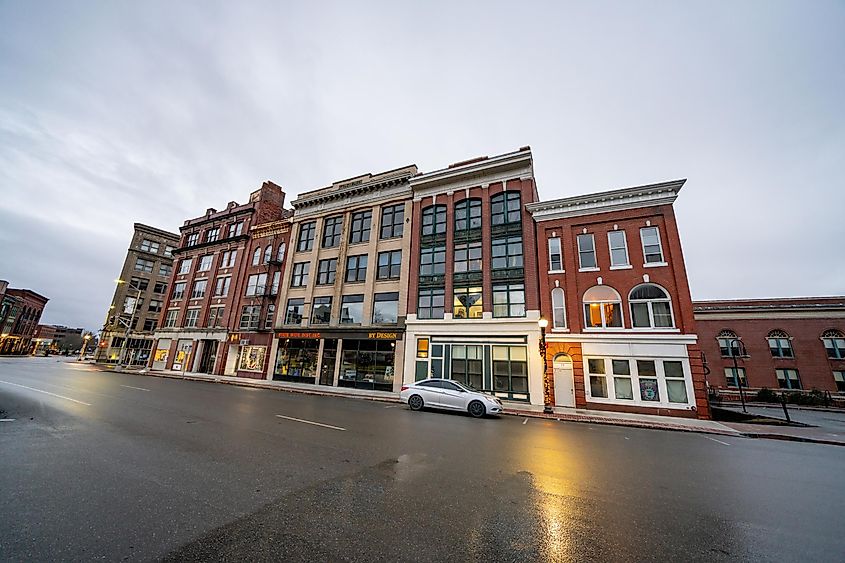
The Penobscot County Jail in Bangor, Maine, features an Italianate front exterior with red brick walls trimmed in pale stonework. Set back from the street, the main entrance is designed to blend in with the other buildings in the area, but the portion of the jail where the cells are located is of a no-frills granite construction. The Frost Burpee House is one of the grandest homes in Bangor, built in 1847. It was originally designed in the Greek Revival style and later renovated to reflect the Queen Anne architectural style, which also reflected the prosperity of the day when Bangor’s boom was comparable to Europe. The earliest Greek-temple-style structure in Bangor is the Zebulon Smith House, built in 1832. It features four large fluted columns in white against a backdrop of red brick and survived not only a fire but also the test of time throughout urban development.
Farmington, Connecticut
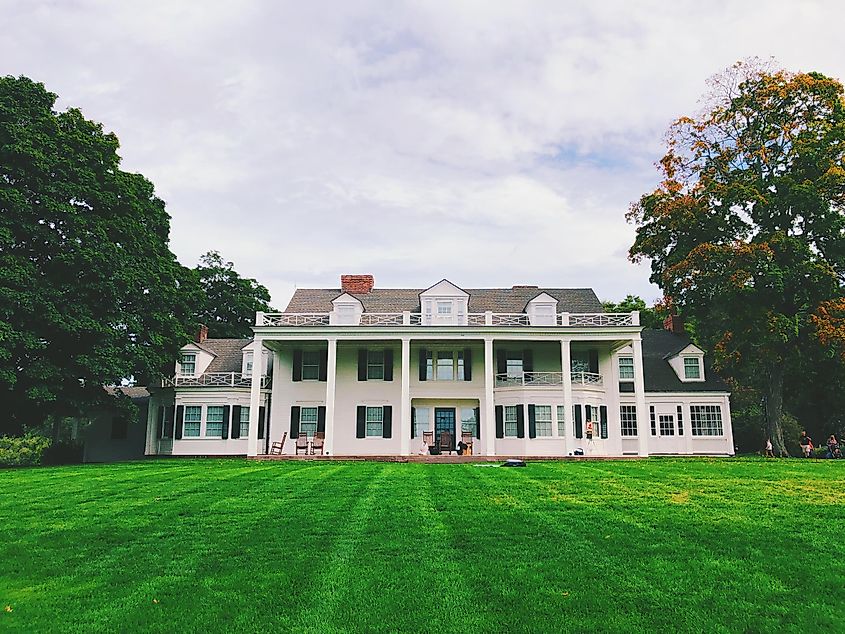
Farmington, Connecticut’s Unionville Museum once functioned as a library funded by the Carnegie family. It represents one of the finest in the series of libraries built by the Carnegie family in the country. The original single-story structure was built in 1917. It has since been developed into a Renaissance Revival style building, featuring arched bay windows, a formidable oak door, and terra cotta roof tiles. The Stanley Whitman House is a National Historic Landmark building from Farmington’s 1720s era, enjoying period-style furnishings that highlight the way of life at the time the home was first built. Now a museum, the property sits on six acres of surrounding gardens also designed to reflect the gardens of the early 1700s. The historically significant Austin F. Williams Carriagehouse and House is an estate with a past centered on the Underground Railroad. During the trial of the Amistad, Williams built dormitories for African Americans held captive aboard the ship as a form of temporary shelter. The home is located adjacent to the carriage house and dormitories and was Williams’ main residence, who held the distinction of being a Conductor in the Underground Railroad.
New England does not disappoint when it comes to the variety of architectural designs and styles within its towns. Inspired by the rich architecture in Europe, New Englanders built a Gothic-style cathedral as seen in the style of the St. Joseph’s Cathedral in Lewiston; the region’s buildings also reflect Greek Revival style like the Zebulon Smith house in Bangor, Maine. Most unique to the region, however, are the Puritan-era homes built in the colonial style, like The House of the Seven Gables in Salem, Massachusetts, reflecting the way of life of early New Englanders as well as their prosperity and faith.











